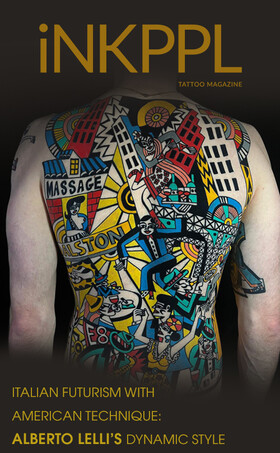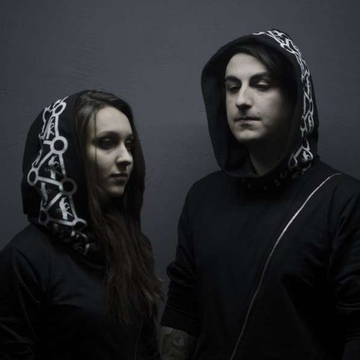Levente Vacsi is a renowned tattoo artist from Hungary, known for his captivating color realism tattoos. His journey from a self-taught novice to a celebrated professional is both inspiring and fascinating. Levente's passion for art has been a constant in his life, driving him to explore various styles and techniques before finding his true calling in color realism. In this interview, Levente shares his experiences, insights, and the evolution of his career, providing a glimpse into the world of a dedicated and innovative tattoo artist.

Let's start with introductions. Where are you from? Where do you currently work and take appointments?
- My name is Levente Vacsi, from Hungary. Like many artists, I started tattooing at home around 2014 after a home party where I made hennas for the girls and got an idea that why don’t I start tattooing? At first, I mostly learned in a self-taught way, practicing on friends and neighbors. After about half a year, I started working in a local studio and got a lot of help from my boss, Peter Kerek. In 2015, I moved to the capital city, Budapest, and in 2016, I opened my studio, Black Velvet Ink. At the moment, my base is Budapest, but I usually do guest spots in Germany and Switzerland.

Do you have an art education? When and how did you start drawing?
- I have liked to draw since I was a little child. I was in a drawing club in elementary school and later in high school, I learned art at a higher level. Thanks to this, I graduated from a painting school. So as far as I can remember, art was always around me. I also like to paint, but I don’t have much time for it these days.

For you, is tattooing art, a job, or something else?
- For me, it’s not a job. I enjoy every day that I can spend tattooing. I would do it for free if I could. I strive to develop, keep experimenting, and try new techniques, color combinations, and equipment. Perhaps what I enjoy most about this profession is that every day is different, and I can travel the world easily. This is the best part of being a tattoo artist; they welcome you everywhere with warm hearts and accept me into their tattoo family. It is a profession that requires a lot of discipline and time, but if you work hard, it also comes with a lot of freedom.

When did you realize you wanted to specialize in color realism?
- In the beginning, I tried many different styles like new-old school, dotwork, and neo-traditional, but I always wanted to be a realistic artist because this was my biggest personal challenge. However, I think it is good if you do not try to specialize in something at the beginning because these experiences expand your knowledge for the future. I had one very nice customer at the start; he booked an appointment for a Superman sign on his feet. We talked a lot during the session, and he became my “human canvas.” It was a deal between us that he gave me a theme, and I could practice and do what I wanted.

We did two full sleeves and two full legs. It took us around five years to finish everything, but you can clearly see how much I have developed year by year. In my first years, I did a lot of greywash and monochrome tattoos, but I realized that color realism is what makes me happy and ambitious. I have a few very old customers for whom I’m making/finishing their monochrome tattoos, but I don’t take new bookings unless it is a very unique and creative theme. I try to focus harder on color realism.
What is your passion? Which tattoo themes attract you the most and why?
- I think it’s always changing, but my eternal favorite theme is skulls and portraits. Nowadays, I’m experimenting with mixing styles. It’s an honor when a customer approaches me with really creative ideas and gives me freedom and trust in the design.

Your tattoo style is very memorable, like a blend of realism and illustration, am I right? How did you develop your style, and what do you call it?
- I can’t say that my style is hyper-realistic. I thought a lot about how I could make spectacular and highly detailed tattoos but at the same time remember that this is still a living human organ, which is changing and aging. In my style, I focus on keeping the balance between highly detailed tattoos and timeliness. In the ten years since I have been working in the industry and have been able to follow the changes in my 6-7-8 years old tattoos, I concluded that it is not worth working with too small a needle.

My smallest needle is 07RL; I never go under that. I do almost everything with the round shader, and a few parts with magnum, and that way, my healed tattoos look like they are fresh, with vibrant and powerful colors. I try to use the best quality inks, and I have a lot to thank James Tattooart, who gave me a lot of advice on which colors will last for years. He has been tattooing for over 20 years, so he has a lot of experience with healed tattoos. I’m glad that he taught me that.
You have many intricate designs! Tell me about how your projects come to life. Do you use AI in your practice? What are your thoughts on this technology in tattooing?
- In my opinion, we can’t compare an artist who is drawing the design with a realistic artist who uses PS; both are hard. Making a realistic plan is harder than people think. I’m not just searching for a picture and copy-pasting it on the skin. It requires a lot of research to find the best pictures that fit the design I imagined. Usually, one full sleeve plan takes me 1-2 weeks to complete. I search for perfect pictures, perfect positions for the body part, use a lot of layers, draw on the design, change the lights, etc. But I often change the design during the tattoo process, adding new texture and details and doing freehand stuff.

I have been using AI for almost a year, and it’s amazing technology when you learn how to use it. It is a big help for the realistic artist who doesn’t find a picture of what they imagined. For example, if I get a good portrait picture but don’t like the colors, I can simply ask the AI to change it for me. Or if I have a project where the customer wants a Crash Bandicoot from the video game, but I didn’t find a good picture, I made it with AI, and the result was amazing. It makes my planning process faster since I’ve been working with it.
Do you have favorite tattoos, clients, projects, or perhaps some unusual stories in your career?
- Many tattoos are special to me. I think I couldn’t choose between them; that’s why I usually say that the newest one is always my favorite. My favorite customers are those who are open-minded. The work with them is so fluent that we can easily find a common connection.

What is the most important aspect of tattooing for you?
- Challenges make me live, which is why I choose more strictly what I book. I always focus on how I can be better and better day by day. The most important aspect is that the progress is constantly visible in my work. I’m very lucky because my wife is my shop manager and my personal manager as well. She makes my bookings, guest posts, researches my designs, and creates AI, so I just have to focus on tattooing.

Do you travel frequently for work? Where have you been? With whom have you had the opportunity to work? Can you share a particularly significant experience?
- I travel a lot for work. I’ve been to many European cities, but mostly you can find me in Switzerland and Germany. In Germany, I work at Viala Tattoo and Piercing and have worked at Human INKstinct Tattoo where I met a lot of good artists like Rafal Dabrowski, Maksim Zotovs, Heniek Pomidor, Marek Hali, etc. At the end of the year, I will do a guest spot at Mori Occultum, where I hope to have similar experiences. In Switzerland, at Piink Tattoo and Piercing, I worked with Bogdan Tomescut, and at Leto Tattoo Studio, I got to know Angélique Grimm, who is a very kind and professional person.

Do you participate in tattoo conventions? Share your experiences and achievements. How many awards do you have? Which ones are the most meaningful to you, and why?
- In 2018, I won first place in the BEST OF BLACK AND WHITE category at the Budapest Tattoo Convention with a full-back skull with ornaments. Also, in 2018, I won first place in the REALISTIC category at the Budapest Tattoo Majalis with a Barbie-themed color tattoo. In 2022, I participated at Urban Land Tattoo Convention in Rome, Italy, and in 2023 at Elit Tattoo Convention in Cologne, Germany. For autumn 2024, I will attend the Bucharest Tattoo Convention and the Brussels Tattoo Convention as a competitor and Stonewall Tattoo Convention as a judge. For me, winning is secondary. I like the convention atmosphere, where the world’s best artists gather from all over the world. You can speak with them, learn from your favorites, and exchange ideas.
Have you collaborated with other artists?
- Not yet, but it is planned with a few artists.
How do you gauge your popularity? And how do you think it can be measured?
- It’s a hard question because I think nowadays we can check this from two different aspects. Type one is the influencer artist, and type two is a regular artist who is showing just his works for the followers. It means much more to me if my work is praised by a tattoo artist than by a follower. Most of my customers have been with me for many years, and for me, it’s the biggest appreciation and feedback. I have a one-year waiting list in Hungary, and I work with returning customers in my guest spots too, so maybe we can say that I’m a popular artist.

Many successful tattoo artists aim to share their experience. Do you engage in such activities, and for whom?
- I don’t do seminars, but a lot of artists search for me to teach them or help them develop. They come to my studio for 1-2 days while I’m working, and they can check my technique. I can explain what I am doing and why, and they can ask questions.
What aspect of being a tattoo artist do you find most appealing?
- This kind of freedom that the tattoo industry brings, and the fact that for us, it is not a job, so we go to work with motivation and pleasure every day.

Do you have any career goals and plans for the near future that you want to achieve?
- It’s not a specific thing. I’m a maximalist, always searching for new challenges in my career. I just want to get better every day, and I would like to participate in several events.











Comments (0)